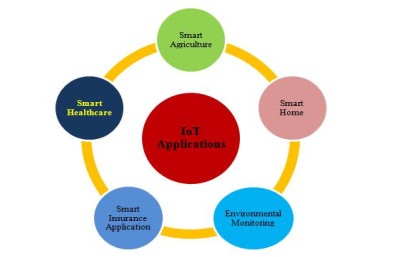Report on Air Quality in Chicago and its Implications for Sustainable Development Goals (SDGs)
1.0 Current Air Quality Status and Public Health Impact
As of August 6, 2025, air quality in Chicago, Illinois, has been classified as “Unhealthy for Sensitive Groups.” This status represents a significant challenge to achieving Sustainable Development Goal 3 (Good Health and Well-being), which aims to ensure healthy lives and promote well-being for all at all ages. The primary pollutant identified is PM2.5, fine particulate matter known to cause severe respiratory and cardiovascular issues.
The city’s air quality has deteriorated to the extent that it was recently ranked among the most polluted major cities globally. This situation undermines progress toward SDG 11 (Sustainable Cities and Communities), which includes targets for reducing the adverse per capita environmental impact of cities, including by paying special attention to air quality.
2.0 Analysis of Causal Factors
The current air quality alert is attributed to a combination of two primary factors, both of which have significant environmental and health implications.
- Ground-Level Ozone: The formation of ground-level ozone is a primary contributor. This pollutant is generated when emissions from industrial facilities, power plants, and vehicles react with sunlight. This highlights a critical need to advance SDG 7 (Affordable and Clean Energy) and SDG 11.4 (strengthen efforts to protect and safeguard the world’s cultural and natural heritage) by transitioning away from fossil fuels.
- Transboundary Wildfire Smoke: Smoke originating from over 700 wildfires in Canada is significantly impacting the Midwest region, including Chicago. These large-scale wildfires are increasingly linked to climate change, underscoring the urgency of SDG 13 (Climate Action). The widespread ecological destruction also relates directly to SDG 15 (Life on Land).
3.0 Geographic Scope and Regional Impact
The poor air quality is not confined to Chicago but affects a broad geographic area across two states, demonstrating the transboundary nature of air pollution. The following counties are under air quality advisories:
- Illinois Counties:
- Cook
- DuPage
- Grundy
- Kane
- Kendall
- McHenry
- Will
- Indiana Counties:
- LaPorte
- Newton
- Porter
- Jasper
This regional impact necessitates coordinated cross-jurisdictional efforts to meet the targets of SDG 11 and protect public health as outlined in SDG 3.
4.0 Official Alerts and Institutional Response
In response to the hazardous conditions, government agencies have issued formal alerts to protect public health, an action that directly supports SDG 3.
- The Illinois Environmental Protection Agency has declared an Air Pollution Action Day for multiple counties.
- The National Weather Service has issued corresponding air quality alerts for affected counties in northwest Indiana.
These actions are critical for informing the public and enabling individuals, especially vulnerable groups, to take protective measures against exposure to harmful pollutants.
SDGs Addressed in the Article
-
SDG 3: Good Health and Well-being
The article directly addresses public health by highlighting the negative health impacts of poor air quality. It states the air is “unhealthy for sensitive groups” and that conditions are “increasing health risks, especially for individuals with respiratory issues.” This connects the issue of air pollution directly to human health and well-being.
-
SDG 11: Sustainable Cities and Communities
The focus of the article is on the city of Chicago and its surrounding urban and suburban areas. It discusses the “adverse per capita environmental impact of cities” by noting that Chicago “is among the most polluted major city in the world” and is experiencing severe air quality issues. The problem is framed within a major metropolitan context, making SDG 11 highly relevant.
-
SDG 13: Climate Action
The article identifies “Canadian wildfire smoke” as a primary contributor to Chicago’s poor air quality. Large-scale wildfires are considered a climate-related hazard, and the article discusses the response to this hazard through “air quality alerts” issued by government agencies. This points to the need for resilience and adaptive capacity to climate-related events.
Specific SDG Targets Identified
-
Target 3.9: By 2030, substantially reduce the number of deaths and illnesses from hazardous chemicals and air, water and soil pollution and contamination.
This target is relevant because the article’s central theme is air pollution and its health consequences. The pollutants mentioned, “PM2.5” and “ground-level ozone,” are hazardous substances known to cause illness. The article’s warning that the air is “unhealthy” and poses “health risks” directly aligns with the goal of reducing illness from air pollution.
-
Target 11.6: By 2030, reduce the adverse per capita environmental impact of cities, including by paying special attention to air quality.
The article specifically focuses on the poor air quality in a major city, Chicago. It mentions Chicago’s ranking as the “3rd most polluted major city” at the time of the report and details the pollutants affecting its environment. This directly relates to the target of reducing the negative environmental impact of cities by managing air quality.
-
Target 13.1: Strengthen resilience and adaptive capacity to climate-related hazards and natural disasters in all countries.
The article describes a response to a climate-related hazard (wildfire smoke). The issuance of an “Air Pollution Action Day” by the Illinois Environmental Protection Agency and “air quality alerts” by the National Weather Service are examples of actions taken to strengthen resilience and help the population adapt to the hazardous conditions.
Indicators for Measuring Progress
-
Indicator 11.6.2: Annual mean levels of fine particulate matter (e.g. PM2.5 and PM10) in cities (population weighted).
This indicator is explicitly mentioned in the article. It identifies the “main pollutant contributing to this status is PM2.5.” The entire article is a report on the high levels of this specific particulate matter in the city of Chicago, which is how this indicator is measured.
-
Indicator 3.9.1: Mortality rate attributed to household and ambient air pollution.
While the article does not provide mortality statistics, it directly implies the relevance of this indicator by discussing the causes of such mortality. The presence of “PM2.5” and “ground-level ozone” and the resulting “health risks” are the basis for measuring progress on this indicator. The article provides the context for why this indicator would be critical to track for the affected population.
-
Qualitative Indicator for Target 13.1: Implementation of early warning systems.
The article provides direct evidence of an early warning system in action. The mention that “multiple alerts have been issued across northeastern Illinois and northwest Indiana” by official bodies like the “Illinois Environmental Protection Agency” and the “National Weather Service” serves as a qualitative indicator that adaptive measures and warning systems are in place to protect citizens from climate-related hazards.
Summary of SDGs, Targets, and Indicators
| SDGs | Targets | Indicators |
|---|---|---|
| SDG 3: Good Health and Well-being | 3.9: Substantially reduce deaths and illnesses from hazardous chemicals and air pollution. | 3.9.1: Mortality rate attributed to ambient air pollution (Implied by the discussion of health risks from PM2.5 and ozone). |
| SDG 11: Sustainable Cities and Communities | 11.6: Reduce the adverse per capita environmental impact of cities, paying special attention to air quality. | 11.6.2: Annual mean levels of fine particulate matter (PM2.5) in cities (Explicitly mentioned as the main pollutant in Chicago). |
| SDG 13: Climate Action | 13.1: Strengthen resilience and adaptive capacity to climate-related hazards. | Qualitative: Existence and use of early warning systems (Mentioned as “Air Pollution Action Day” and “air quality alerts” being issued). |
Source: iqair.com







